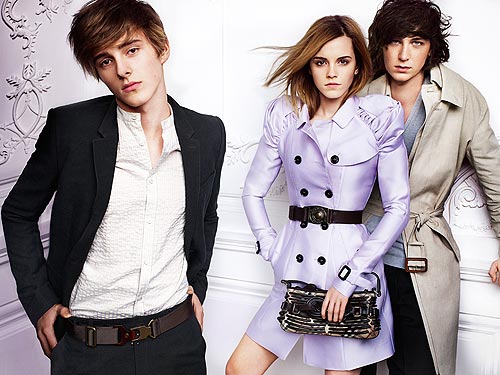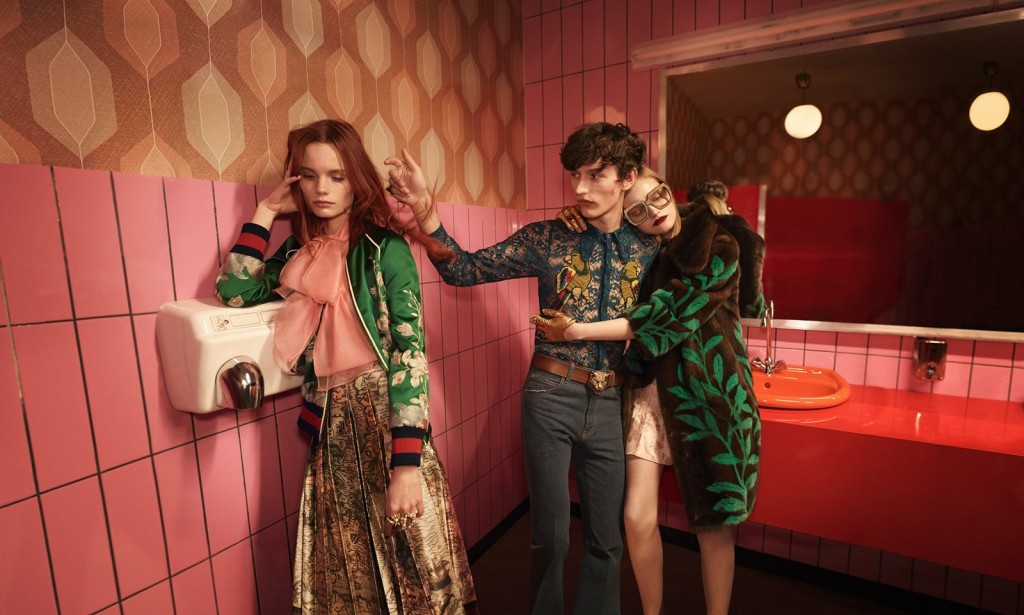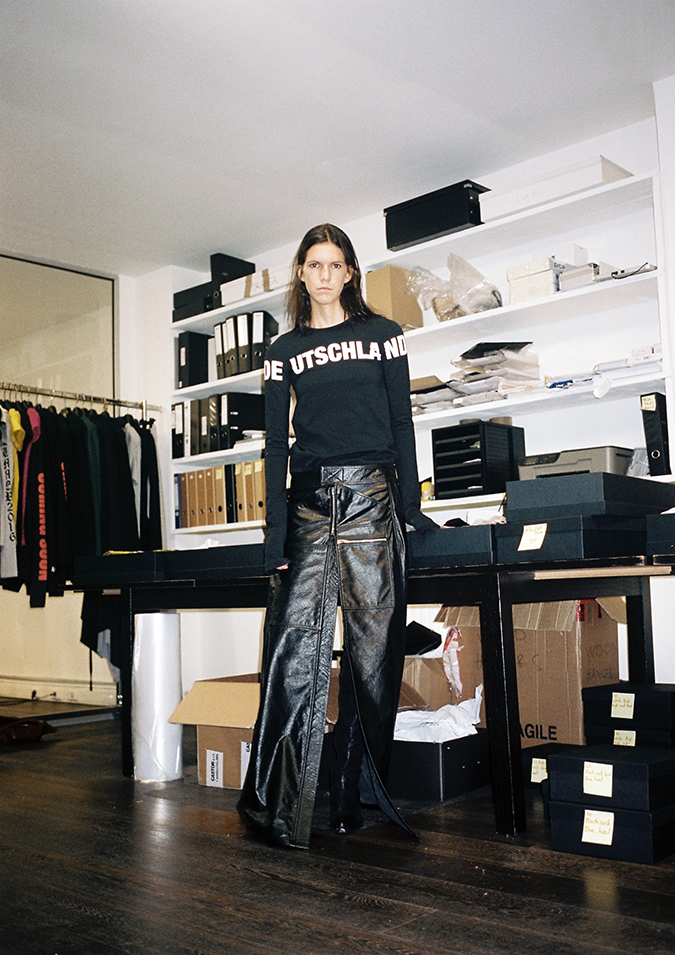Is ‘Re-Branding’ The New ‘Branding’?
Is ‘Re-Branding’ The New ‘Branding’?
Although knowledge of what a ‘Brand’ is may seem to be intuitive in this billboard/advert/flyer/poster/theme-tune saturated state of contemporary society, for the purposes of this article I will define ‘brand’ as the toolbox of marketing and communication methods that help distinguish a company from its competitors. Its aim is to ultimately create a lasting impression in the minds of its customers. Following from this, a ‘re-brand’ is simply a marketing strategy in which a new identity and image is created for an already established brand. Re-branding is an attempt to develop a refreshed and innovative image of the established brand, usually in the hopes of promoting sales.
Now that the boring business of definitions is out of the way and we are all hopefully on the same wavelength, we can address this ambitious question: Is ‘Re-Branding’ The New ‘Branding’?
Branding in the Fashion Industry
It does not seem controversial to state that the Fashion World is based on perceptions. Whether they are perceptions of a certain fashion retailors product, service or customer – every brand is almost immediately associated with a set of preconceptions. Although some of these may be due to personal experiences, many will have been carefully manufactured and shaped through the company’s branding.
One could even go as far as saying that when it comes to fashion you are more often than not told what to like, whether it be Coco Chanel telling us that all a woman needs is an LBD or Alexander McQueen making the morbidity of skulls and extraterrestrial looking shoes, fashionable.
Even studies, such as the Zajonc’s Mere Exposure study, have been carried out to show how repeated imprinting of a brand image would almost certainly reflect in its sales – positing the idea that an instantly recognizable product being the preferable one. In light of this, the importance of branding cannot be doubted.
Re-Branding in the Fashion Industry
However, there seems to be a slight twist in the branding plot when we look at more recent events of the fashion industry. Now for a few examples to illustrate my point.
Burberry
A quintessentially British brand, founded more than 150 years ago with the introduction of high quality yet stylish waterproof fabric gabardine trench coats. Recognizable mainly for the black, tan and red check pattern that are featured in the linings of their coats or on their signature wool scarves. However, despite the supposed high status of the brand, it went through a period of serious risk as it was dubbed as both outdated and even worse, related to the pub-going hooligans who were often seen sporting the label.
It was only when Christopher Bailey, the brand’s creative director, and CEO Angela Ahrendts (appointed in 2006) took matters into their own hands and overhauled the collection with a mix of modern and classic looks, making the trench coat a sexy item to own, that high-profile fashion icons like Kate Moss started to promote the brand. Sales started to pick up once again, rising 27 percent to $747 million in the third quarter of 2011.

(Mario Testino/Burberry SS10. Source: http://stylenews.people.com/style/2010/01/05/emma-watsons-spring-summer-2010-burberry-ads-revealed/)
In the case of Burberry, we can see a line (regardless of how fine it may be) being drawn between ‘brand’ and ‘rebrand’. The Burberry ‘brand’ was already well known, established and recognizable, perhaps even too much so. It was not until the label rebranded that it really came to the forefront of luxury goods. It was the re-branding of the classic and traditional that showed customers the innovation and creativity they wanted.
Gucci
Now we come to Gucci. The Italian luxury brand of fashion and leather goods founded in 1921, has always run rather controversial ad campaigns. Despite being famous in producing adverts that are high in the sexualization and stereotyping of women, the shock value seemed to contrast with the old fashioned stuffy and even, dare I say it, standard clothing.
It was not until this year, 2016, with the help of Glen Luchford’s photography and Christopher Simmonds’s art direction, that Gucci re-entered the contemporary fashion conversation. This refreshing of their brand includes a younger, more vibrant feel, embodying the decadence and spirit of 1980s Berlin. With youthful, energetic models, high exposure photography, flamingoes and peacocks as props and colourful clashing prints, the label has become one that is difficult not to talk about, I even followed them on Instagram (a move which I do not take lightly!).

(Glen Luchford/Gucci SS16. Source: http://www.dazeddigital.com/fashion/gallery/21108/5/gucci-ss16-campaign)
Again, it is the rebranding of this major fashion house, rather than its old image, that has attracted such attention. Their fun, active and young rebranding has managed to make people believe that if they want to have fun, and look unashamedly decadent doing so, then Gucci is the place to shop.
Vetements
Finally we come to, what I believe to be, one of the most interesting cases of fashion marketing/branding of 2015/16. Vetements. That’s right, there is a fashion label that is literally a French translation of the word ‘Clothing’. However, despite this seemingly ‘back-to-basics’ approach, what CEO Guram Gvasalia is doing is fascinatingly progressive.
His brand came on to the fashion scene in 2014, and rapidly became one of the most talked about and most controversial labels in the world. His Autumn/Winter 2016/17 collection was certainly one of the most talked about, featuring oversized hoodies, sock-shoes (they are exactly what they describe), tracksuits and ‘DHL’ logo printed bright yellow t-shirts. The clothing certainly gave rise to a significant amount of cognitive dissonance in the minds of fashionistas worldwide.
Gvasalia brought questions surrounding the ideas of luxury and exclusivity to the forefront. Two concepts that are central to most luxury goods retailors, as it is these features that both attract customers and also encourage them to accept to the high price-tags put on the items in the first place.
In a discussion at The Royal Institute, Gvasalia told the 1 Granary reporter, Sarah Mower:
‘We are always trying to change the supply curve, making it just a little bit less than the demand curve, to make sure that you sell out…It is always better to sell one piece less to a store and to be sold out than to sell one piece extra and to go on sale. Because once you go on sale, there’s no going back… if something goes on sale, it means it was overproduced.”
It seems that he is a firm believer in the simply ‘less-is-more’ approach, and everybody is following suit. Gvasalia is attempting to nip the need for rebranding in the bud, criticizing Louis Vuitton as being of luxury quality ‘but if you can go to the store and get whatever you want, it’s not luxury’. Therefore Vetements has decided to put caps on the number of items one retailer can buy (10 pairs of jeans), and once an item is out of stock – that’s it.
Conclusion
Vetements might be a new label and thus the brand they are attempting to establish may at some point in the future need rebranding, as many others have, what I find interesting about their concept is that they are attempting to rebrand the fashion world as a whole. ‘It’s moving away from this idea of fast fashion, to this idea of slow fashion’, stated Gvasalia, a fashion where you enjoy the pieces you buy forever rather than just for a season – who ever thought you could potentially be claiming that ‘a cotton yellow t-shirt is for life, not just for Christmas’?.
But it seems that Vetements is rebranding ‘fashion’, purporting exclusivity as the key to luxury and therefore the key to success and extending this to everything, from a Burberry trench, to a Gucci dress and even to an oversized Vetement hoodies.
Therefore, to answer the question posited in the article title, yes – I think rebranding is the new branding. This certainly follows from the rather postmodern ideals of our century, namely that nothing can or ever will be truly original. Yet, as the world of art shows us again and again, recreation does not necessarily imply boring imitation. Is it not more interesting to create new images from old jigsaw puzzle pieces?
Is ‘Re-Branding’ The New ‘Branding’?


